Grizzly: King of the Mountain
May 22, 2006, began just like any other day in Yellowstone Country. The sky was a deep summer blue, with large rolling cumulous clouds off to the southwest.
The temperature was a pleasant 60 degrees, and the wind was howling in bursts and fits, tumbling down the slopes of Quadrant Mountain. As one of the bear-safety-through-education rangers in Yellowstone National Park, I am supposed to be where the bears are being spotted, and for over a week now I had been hearing reports of a female grizzly with two cubs of the year on Swan Lake Flat.
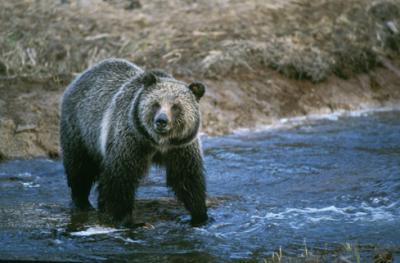
The small bands of bear seekers had already started gathering around the pullouts overlooking the sweeping sagebrush flats that comprise Swan Lake Flat. Everything was green and succulent, a grizzly paradise. I arrived early on this splendid morning, giving myself time before my shift began in hopes of catching a glimpse at my first grizzly cubs of the year—affectionately known as coys. After pulling into a private little one car pullout, I slid out of the car and glassed the rolling hummocks with my binoculars.
Spring’s grasp on the valley was apparent in the profusion of wildflowers, grasses and sedges. Summer would be just around the bend; but above the tree-line, off in the distance, Montana’s Gallatin Mountain Range remained trapped in a blanket of snow and ice. Mesmerized by the effortless dance of two redtailed hawks and the ancient song of sandhill cranes, I rested my binoculars on my chest--until I spotted a dark dot moving across a snowfield. Bringing my binoculars up, I scanned the snowdrift, and there she was--my first Swan Lake grizzly of the year, with two little twenty pound balls of fur in tote. On this morning, within sight of a grizzly family doing what bears do best—searching for food—the massive bulk of Electric Peak seemed to rise a thousand feet. This is the effect a grizzly has on the mind and the landscape.
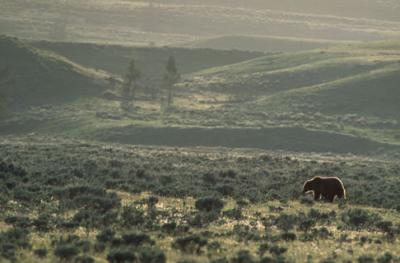
While several of us were lucky enough to observe a mother grizzly and her two cubs that Yellowstone morning, the truth is we didn’t need to actually see the bears to experience them. That is the beauty of being in the wildlands scattered throughout Montana. Anywhere the grizzly still roams speaks of wildness. Just by being in the presence of the great bear, we are inherently experiencing the grizzly.
Each year, millions of visitors flock to Yellowstone and Glacier National Parks and the wilderness areas that surround these legendary wildlands. For many of these visitors, it is the opportunity to see a grizzly--or at least to walk in its presence--that causes them to travel from all over the world. They want to experience Montana at its most authentic level. And what could possibly be a more authentic Montana experience than shouldering a pack filled with a few days worth of food and heading out into grizzly country?
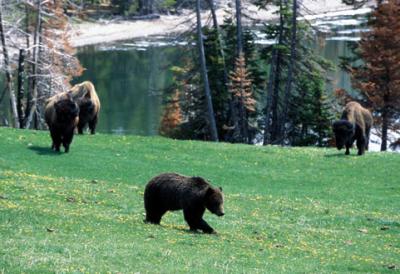
Predators in the wild have always captured our imagination. They have earned a presence in our stories, writings, and even our governmental policies. The grizzly is considered by many to be the closest wild creature to man. The traits we share with the great bear are numerous. They are omnivoures and, like humans, opportunistic eaters. They have the ability to stand on their hind legs, and even walk in an upright position. Their rear paw track looks much like a human footprint. They have binocular vision and dexterous forepaws. The similarities go on, but perhaps the most notable similarity can be found in the grizzly's behavior. Watching a mother grizzly discipline her cubs is much like watching a mother who has just finished an eleven hour shift trying to get her two young children through the grocery store. The mother grizzly will bawl at her cubs, whoof at them, and even cuff them upside the head if she really needs their attention. With the exception of primates, no animal is more dependent upon learning behavior from its mother than a bear cub--grizzly cubs in particular--which may help explain why there is arguably more anthropomorphism in relation to the grizzly than any other animal on this continent.
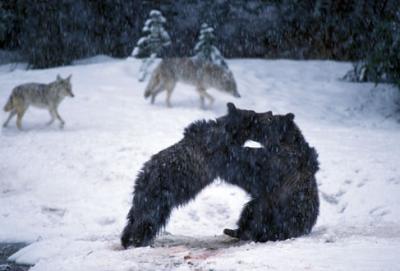
Native American peoples, who coexisted with the bear long before Euro-Americans arrived on this continent, considered the grizzly a helper, teacher and even a brother. While it would be misleading to depict a perfect and general harmony between all native tribes and the grizzly, it is safe to say that the grizzly has been universally respected, and often revered by Native Americans. So great was this reverence in some tribes that a warrior who killed a bear, touched a bear in its winter sleep, ate a bear, or even dreamed of a bear, was thought to be invincible. Some Indian people describe the bear as “half human," while others describe them as, “human without fire.”
When I am speaking to visitors in the park, and talking to them about hiking in grizzly country, they sometimes tell me, “Oh, I know bears. I'm not really worried about them. I've been hiking in the Smokies with black bears for years.” I always hate to break it to them, but it's my job to inform them that when contemplating grizzlies and black bears, one is dealing with two entirely different beasts. The Blackfeet people knew this difference very well. They called the black bear "kyaio," which means "bear." But the grizzly bear they called "nitakyaio." Translation: "real bear."
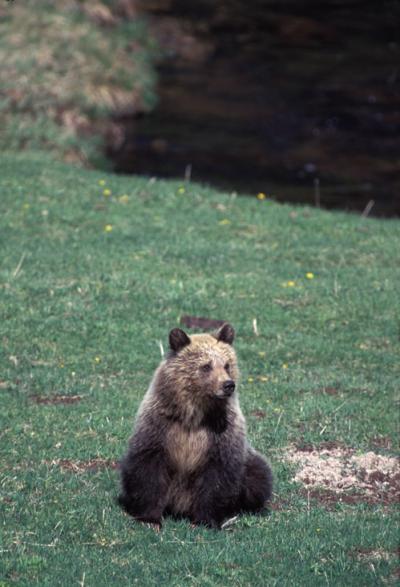
Amazingly, the same qualities that led many native tribes to revere the grizzly bear—its skill, cunning, and strength—nearly led to its extinction. With western expansion in the 19th century, ideology and philosophy regarding predators like the grizzly transformed almost as quickly as the landscape was devoured. As a result, the grizzly bears of the 21st century have been reduced to less than 2% of their historic range. While there were once over 50,000 grizzlies in the lower 48 states, it is estimated that less than 1,500 grizzlies remain. Today there are only two viable grizzly populations in the contiguous United States: the Northern Continental Divide Ecosystem (NCDE)—with approximately 600 grizzlies--which encompasses Glacier National Park and the Bob Marshal Wilderness Complex; and the Greater Yellowstone Ecosystem (GYE)—with anywhere from 350-610 grizzlies--which includes Yellowstone and Grand Teton National Parks, and the surrounding six national forests. With another 20-30 grizzlies in the Cabinet-Yaak ecosystem in northwestern Montana—the most imperiled grizzly population in the United States--the gem state is home to more grizzly bears than any other state in the lower 48.
For now these two grizzly populations (GYE and NCDE) seem to be doing better-by the numbers anyways--than at any time since being listed as a threatened species in 1975; yet the future of the grizzly in the lower 48 remains a concern for advocates and biologists alike.

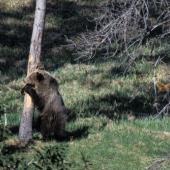
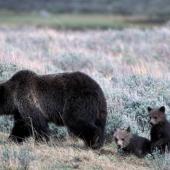
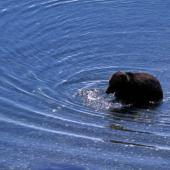
An adult male grizzly bear may have an average home range of over 800 square miles in an arid, high plateau ecosystem like the GYE. This is a testament to what we have known for quite some time about grizzlies--that they need big, wild, untrammeled wilderness to survive. Fortunately we have just that, right here in Montana. Montana remains home to some of the most rugged and spectacular wilderness in North America. In fact, as Montanans, we have something even greater than wilderness. Montana is one of the last places where one can also experience wildness.
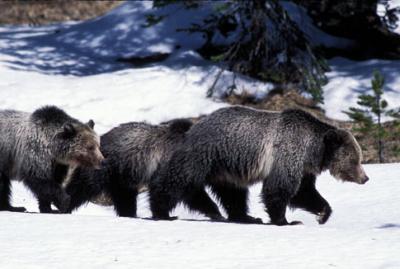
There is a big difference between wilderness and wildness. For many, that difference is the grizzly bear.
Yet the wild country that serves as home to grizzlies here under the Big Sky is growing smaller and more tattered each year because of rapid population growth, recreation and resource use. While we can assume that core habitat for grizzlies will always be protected in the national parks and surrounding wilderness areas, it is the river bottoms and forest edges that grizzly advocates worry about. As large as the Greater Yellowstone Ecosystem is, at roughly 18 million acres in size (bigger than the states of Delaware and Rhode Island combined), it is still a geographic island for its inhabitants. There are just too many barriers that keep grizzlies in the GYE region from emigrating into the NCDE and vice versa, and the probability of intermingling between the two populations grows smaller with each new generation of grizzly bears.
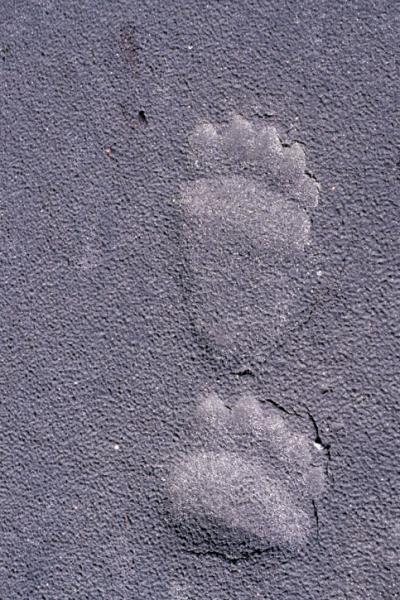
Ironically, the future of the grizzly in Montana may rest in large part upon neighboring Idaho’s desire to one day reintroduce grizzlies to the Central Idaho Wilderness Complex. With grizzlies in central Idaho, and an enthusiastic effort to protect both core habitat and corridors, we could one day connect these isolated grizzly populations, potentially resolving the concerns about genetic diversity that exist today. This is the bold vision of the Yellowstone to Yukon Initiative, better known as Y2Y--to link protected areas such as the Bob Marshall Wilderness Area with other core habitat by protecting natural corridors, or by building artificial ones like those found in Banff National Park in Alberta, Canada.
In recent years, grizzlies have helped show us why the protection of their habitat is so vital. Grizzly bears are considered by those in the scientific community to be an indicator species. When the grizzly bear population in an ecosystem is strong and healthy, it indicates that the land and other wildlife therein is faring much the same. Because of the huge home ranges of grizzly bears, the diversity of their complex dietary requirements, and their anti-social, solitary nature, the needs of a grizzly are far greater than most other large mammals of North America. Grizzlies are also considered to be an umbrella species—much like the indicator species—meaning if we take care of grizzly habitat, we are generally going to be taking care of the habitat requirements of the majority of other flora and fauna found within the landscape.
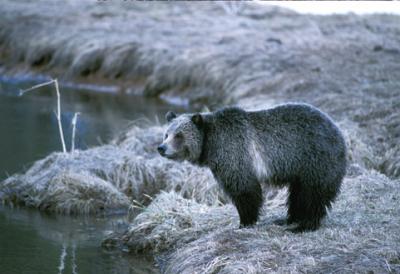
While the future of the grizzly remains uncertain--even here in Montana--for now this species, once thought to be on the brink, seems to be thriving. This is a cause for celebration. The grizzly is a symbol of Montana and everything we hold to be real and true. The writer Terry Tempest Williams once said, “if you know wilderness in the way you know love, you would be unwilling to let it go. This is the story of our past, and it will be the story of our future.”
For those of us who really love and cherish the opportunity to walk the backcountry in places like Yellowstone and Glacier, what makes it an entirely different experience than a hike in California or Colorado is its wildness. We have a saying here in Montana that if we were to lose the grizzly we would be just another Colorado. Yes, it would be beautiful, and certainly it would be rugged, but would Montana still be wild?
The grizzly bear is an animal that has been with us here in North America since the beginning--an animal that people have feared, avoided, and revered. It is an animal that some peoples sought as a teacher. And yet, sadly, there are very few of these great bruins left in the lower 48.
That may be acceptable to some people. Some are just fine knowing that there are still grizzlies in Alaska and Canada, but I think Aldo Leopold put it best when he said these words: "There seems to be a tacit assumption that if grizzlies survive in Canada and Alaska, that is good enough. It is not good enough for me. Relegating grizzlies to Alaska, is about like relegating happiness to heaven; one may never get there.”
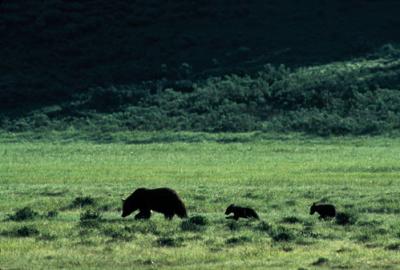
The grizzly bear is a part of us, and should we ever lose the great beast, we will forever be losing a part of ourselves, a part of our ancestors, our history, and story as a people. The bears are where they are today, once again thriving in Montana, largely because of science, wildlife biologists and wildlife managers. And while they will remain an integral aspect of grizzly preservation in the future, I think something far greater must occur to guarantee the grizzly's survival well into the future.
We will only fight to save what we love, and love is not something that comes easily or overnight for most people. But the future of the grizzly may depend upon our ability to love. Maybe not the bear itself, but to at least love what it represents, what it symbolizes and contributes to our own lives. This will take time, but the thousands of visitors who flock to Montana each year, with the sole desire to experience grizzly country, give reason for optimism.
Chief Seattle once said, “What is man without the beasts? If all the beasts were gone, man would die of a great loneliness of spirit.”
I would ask: what is Montana without the grizzly?
Michael Leach is a seasonal bear education ranger in Yellowstone National Park, a Montana fly-fishing guide, and writer. Originally from North Idaho, he lives with his beautiful wife in Gardiner, Montana.

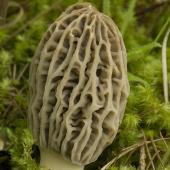
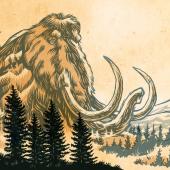
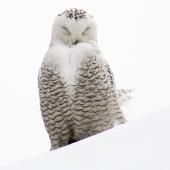
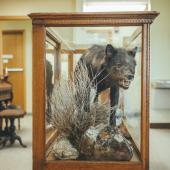


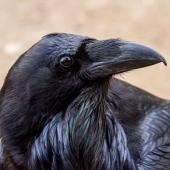

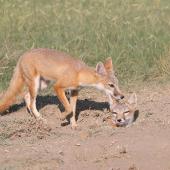
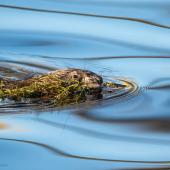

Leave a Comment Here